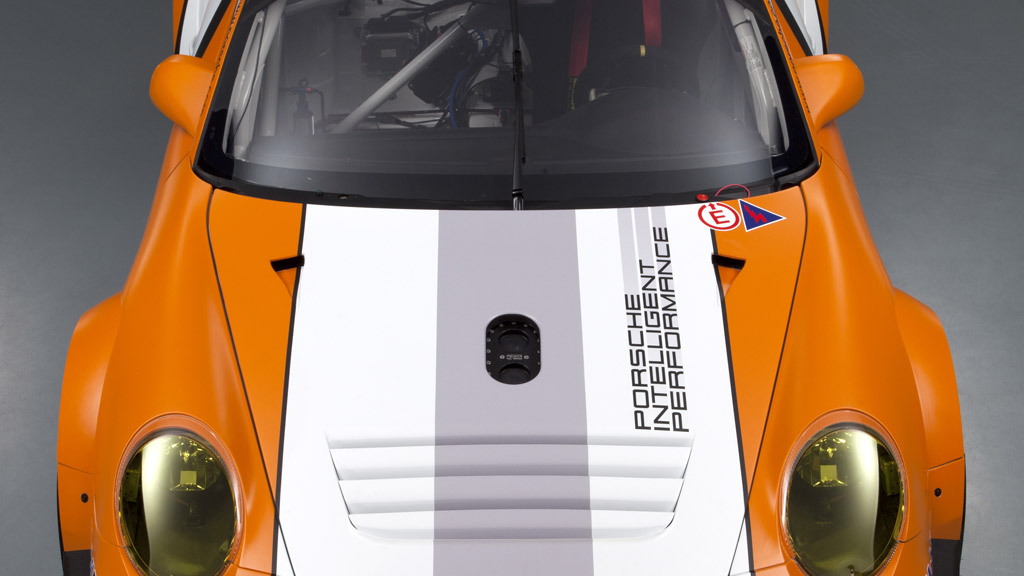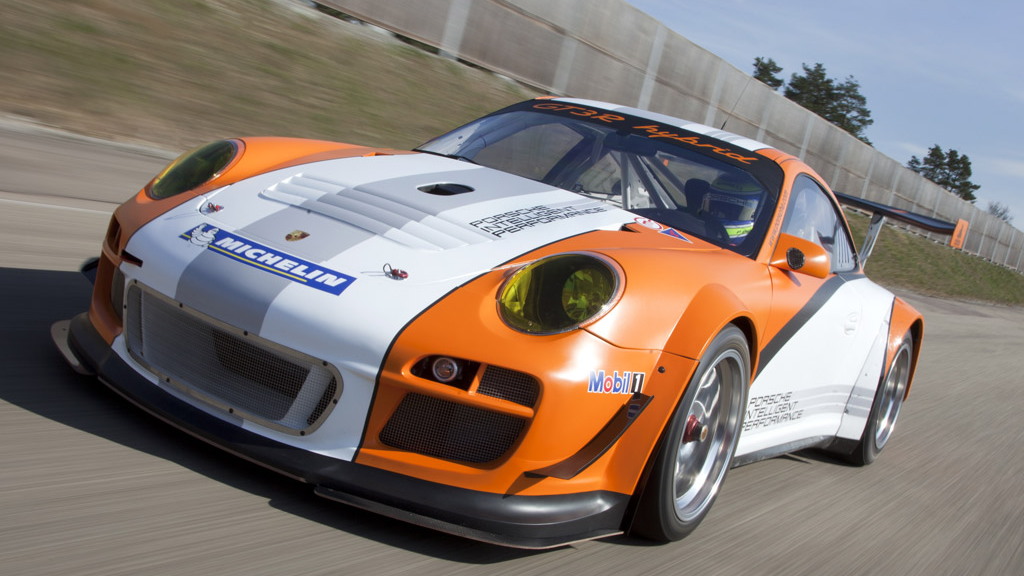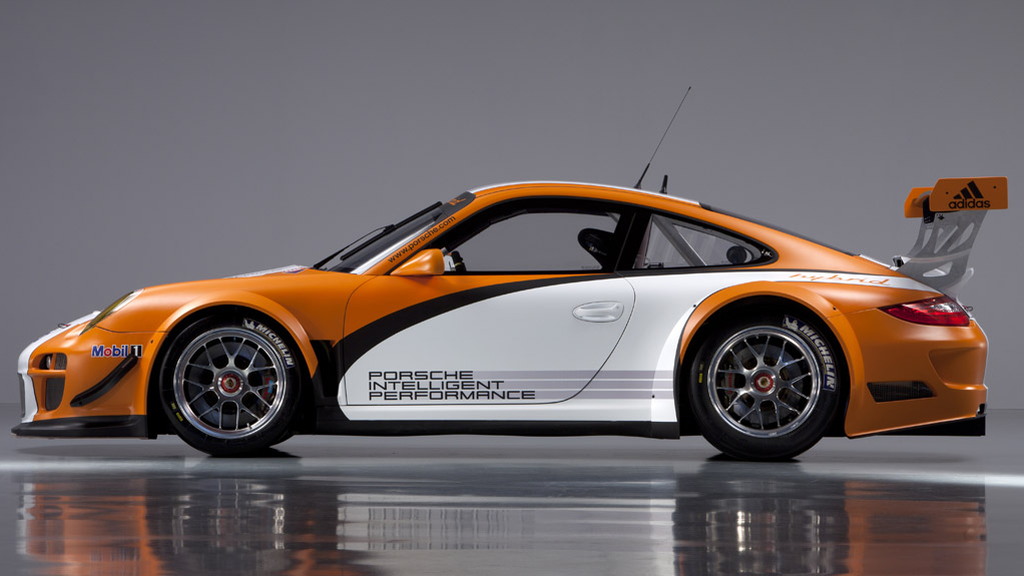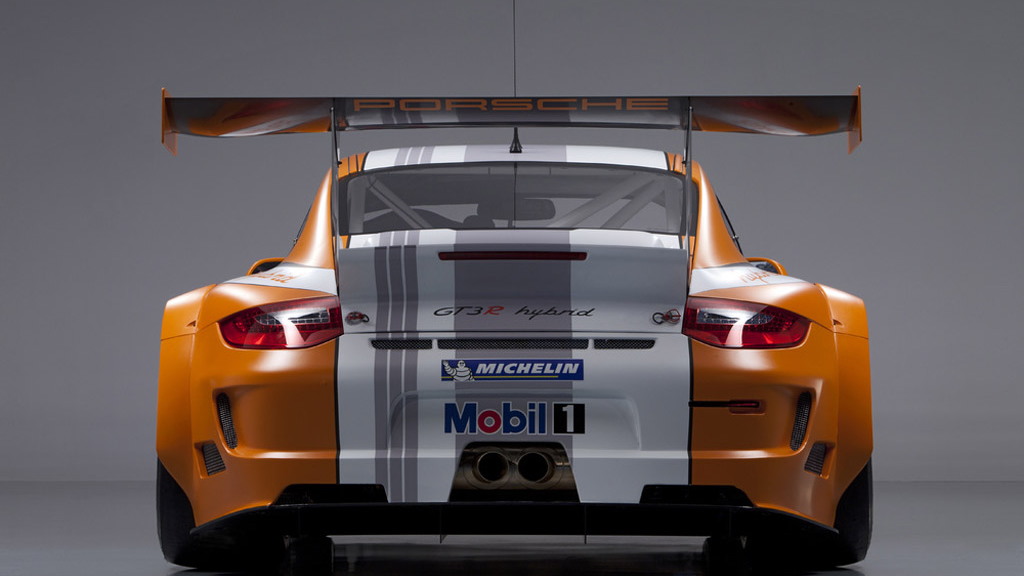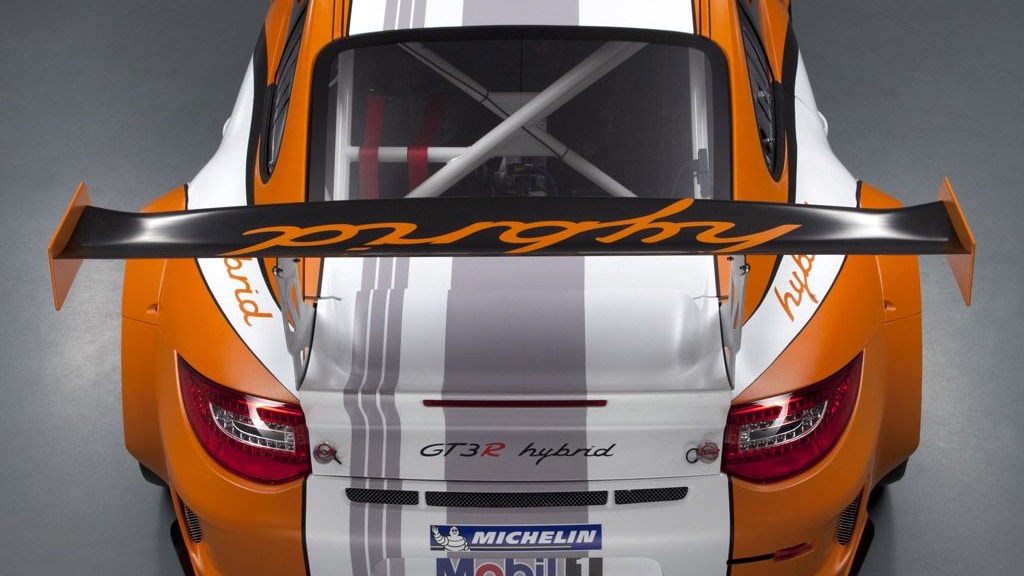If at first you don't succeed ... make your race car better.
That's the principle behind yesterday's launch of the Porsche 911 GT3 R Hybrid 2.0. It's the second iteration of Porsche's ground-breaking 911 endurance racer fitted with a Kinetic Energy Recovery System, or KERS.
The first version of the 911 GT3 R Hybrid, revealed exactly a year ago, led the 24 Hours of Nurburgring in its maiden competition run, until a mechanical failure forced it to retire just a few hours before the checkered flag.
That failure, Porsche hastens to point out, was in the combustion engine, not any of the hybrid components. But it was heartbreaking nonetheless for the development team, which hopes to make up for the loss at June 's 2011 Nurburgring 24 Hours.
Last October, the car finished the Petit Le Mans at Road Atlanta, part of the American Le Mans Series, where it won its special experimental class...of one car.
That weekend, Porsche's Dr. Daniel Armbruster, who led the hybrid racer's development team, indicated that further development would focus on integrating the mechanical systems, to cut the weight to that of a standard 911 GT3 RSR, and refining the software.

Porsche 911 GT3 R Hybrid
And that's exactly what Porsche has done.
For 2011, the company's engineers have cut 110 pounds out of the second-generation 911 GT3 R Hybrid. That puts it at just 30 pounds more than the standard 911 GT3 RSR.
As before, a pair of electric motors powers the front wheels, with the rear axle driven by a 470-horsepower, 4.0-liter flat-six engine.
A portal axle with two electric motors drives the front wheels and supplements a four-liter engine driving the rear. This engine is rated at around 470 horsepower, while the output of each electric motor now stands at about 100 horsepower.
Regenerative braking stores energy by electrically powering up a flywheel spinning at speeds as high as 40,000 rpm inside a carbon-fiber safety housing where the passenger seat would be.
That rotational energy is then converted back to electricity to power the front wheels. But unlike last year, the hybrid system supplies energy automatically based on acceleration--though the driver can still add "boost" by pressing a button as well.
The hybrid systems' displays and controls are now largely located on the steering wheel, with less frequently-used functions triggered via backlit buttons on the center console.
We can only assume Porsche has extensively tested the layout with its drivers, because to us it looks like a video game--one that has to be played while moving at speeds up to 180 mph.
Visually, the car's distinctive orange-and-white color scheme remains. Version 2.0 of Porsche's hybrid racer, however, omits the louvers in front of the rear fenders, reducing aerodynamic drag.
The first 911 GT3 R Hybrid received rave reviews from 911 GT3 race driver Patrick Long, who drove it for two weeks last summer on the Lausitzring circuit outside Berlin.
Last year, the hybrid GT3 was able to do 11 laps of the Nurburgring circuit on a full tank of gas, against the standard 911 GT3 RSR's 10 laps. That 10 percent increase in range is hugely important in endurance racing.
Now on to the "Green Hell," as the Nurburgring is not-so-affectionately known by racers.
[Porsche via MotorAuthority]
+++++++++++
